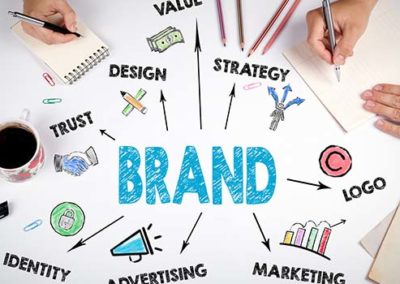A couple years back, I was consulting with a client of ours, the owner of a dental practice, about their referral promotion. They were looking for a good idea that could excite their patients and get them a ton of referrals. To them, it seemed like a lofty goal. But I knew from experience that, together, we could make it happen.

Over an hour or so, we went through a variety of different options for the promotion. I knew the success of the promotion could only succeed if, in return for referrals, my client gave their patients something they’d actually want. “Well,” I said eventually, “why don’t you just give away a trip to Disney World?”
At first, they were hesitant. Their primary concern was the price tag of the trip. Lucky for them, I have 5 kids. We go to Disney World almost once a year, so I know where to find the good deals. I assured the client that I didn’t think it would end up costing as much as they expected. We jumped on a website to price it out.
It turned out that a 4-night, 5-day trip to Disney for a family of 4, including hotel and park tickets, was about $1,700. Airfare from Boise (where the client’s practice is located) to Orlando averaged about $400 per person. Everything included, the trip would cost around $3,300.
$3,300 is far from pocket change, which made the client a little nervous. But I was positive that if we came up with a good plan for the referral promotion, the cost would easily be covered by the referrals they’d gain from the campaign.
How We Promoted The Trip
 My client didn’t want to tack on a bunch of extra spending for ads, but of course, a little was necessary. We settled on 3 primary promotional methods:
My client didn’t want to tack on a bunch of extra spending for ads, but of course, a little was necessary. We settled on 3 primary promotional methods:
- They hung huge signs in their office, including posters in every OP (the rooms where you get your dental work done). They also included paper inserts in every toothbrush bag and covered the office with information about winning the trip to Disney World. It was hard to miss.
- In addition, they ran a contest to incentivize their team to tell patients about the trip and encourage the patient to refer their friends, family, and co-workers.
- They ran inserts and ads in the company newsletter, promoting the trip to patients between visits.
When I break the referral promotion down that way, it sounds simple, but in reality, their marketing was anything but. In my experience, most people would have stopped at the in-office signage and maybe add it in a few of their OPs. Assuming they have a newsletter or any owned media (which 99.9% of businesses do not), they may loosely promote it there. It’s possible they’ll ask their team to talk about it, but with few incentives and virtually no follow-up.
What It Really Takes To Get Someone Moving
 Any referral promotion with a good enough offer can produce results. However, if you want great results, you have to create a massive amount of force to drive the campaign forward. Imagine the patient standing still. How much energy will it take to get them moving? Isaac Newton will tell you objects that are not moving have a tendency to stay that way.
Any referral promotion with a good enough offer can produce results. However, if you want great results, you have to create a massive amount of force to drive the campaign forward. Imagine the patient standing still. How much energy will it take to get them moving? Isaac Newton will tell you objects that are not moving have a tendency to stay that way.
Getting anything to launch from a point where it is standing still takes a ton of effort. Think about it like a space shuttle. To launch a shuttle into space takes as much as 660,000 pounds of solid fuel per minute. That’s 42 school buses every 60 seconds. It’s not much different with a referral promotion. The vast majority of business owners underestimate the amount of energy it takes to get momentum on such a program. In turn, they fail to put the necessary marketing muscle behind it. They think small, and the promotion falls flat.
The Referral Promotion Results
 My client ran their campaign for seven months. During that time, their office averaged a whopping 48 new patients per month, solely from referrals. That’s 336 patients over that 7-month period, folks. If you divide the Disney World trip across each of those new patients, that’s only about $10 per newbie.
My client ran their campaign for seven months. During that time, their office averaged a whopping 48 new patients per month, solely from referrals. That’s 336 patients over that 7-month period, folks. If you divide the Disney World trip across each of those new patients, that’s only about $10 per newbie.
Obviously, there are other marketing expenses you’d need to include in that cost. And I don’t have all those figures detailed out. But even if I estimated on the extremely high side for their marketing costs, they’d still be under $50 per new patient. That’s easily one quarter of what an average dental office typically spends per new patient. Their referral promotion was a true home run.
I want to leave you with one final thought. Had this practice removed, or fallen short on, any one of the three steps I outlined above, I’m certain it would have generated far fewer new patients.
Not only do you have to be bold with your offers, but you need to promote them like crazy to get any kind of result. You have to own your own media, reward your employees for helping promote your campaign, and constantly push to drive the referral promotion forward.
You have to put all your weight behind the referral promotion. Only then will you see results.
To learn how you can double your referrals and triple retention, request a complimentary copy of our book, The Ultimate Guide to Newsletters.






